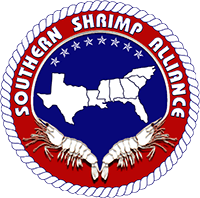The Gulf of Mexico Fishery Management Council will be considering and selecting management measures to rebuild the red snapper stock Monday, March 20 through Thursday, March 23 at the Radisson Admiral Semmes in Mobile, Alabama. Red snapper are overfished and overfishing continues. “Overfished,” is a technical management term meaning that the stock lacks the sufficient number of fish required to support a healthy fishery. “Overfishing” means too many fish are being taken to rebuild the stock to its historical levels by 2032, as required by federal legislation. Today, the red snapper stock in the Gulf of Mexico is growing, but not fast enough to meet federal requirements.
The “Red Snapper Fishery Management Plan” established in 1999 set goals to dramatically reduce the amount of juvenile red snapper caught accidentally in shrimp nets (shrimp bycatch) and to maintain the total allowable catch by recreational and commercial red snapper fishermen at 9.12 million lbs/year. Between 1999 and 2005, the U.S. shrimp industry successfully reduced red snapper bycatch mortality by over 50% as required by the plan.[1] Shrimpers use multiple bycatch reduction devices (BRDs) and abide by permanent and seasonal closures of more than three million acres of essential fish habitat off Florida, and a larger area off the Texas coast.
The 1999 red snapper management plan failed because it’s model did not properly account for the different mortality rates of red snapper based on age. The “age 0” juvenile red snapper found most commonly in shrimp nets have an 80% total natural mortality rate.[2] Commercial and recreational fishermen catch sexually mature red snapper that have survived their vulnerable youth. In stark contrast to the aggressive restructuring the shrimp industry underwent, the Gulf Council permitted commercial and recreational fishermen to continue to harvest the same amount of red snapper as they have for over a decade. A better understanding of the red snapper life cycle demonstrates that ignoring the directed fishery was a big mistake.
The Southern Shrimp Alliance, which represents shrimp fishermen and processors in eight southern states, believes the red snapper stock will not meet recovery goals until commercial and recreational fishermen that target mature red snapper are required to reduce the number of red snapper they catch each year. Shrimpers support the Gulf Council’s proposals to reduce the total allowable catch for the fishermen that target adult red snapper and removing size limitations on red snapper that lead to greater mortality.
For further information on the shrimp industry’s positions on the proposals being discussed at the Gulf Council meeting in Alabama, please contact Deborah Long at 804.360.0074 [number updated 1/12/12]. You can learn more about the Southern Shrimp Alliance at www.southernshrimpalliance.com.
1 Letter to Gulf of Mexico Fisheries Management Council by Dr. Nancy Thompson, Southeast Fisheries Science Center, September 20, 2005, p. 6.
2 SEDAR 7 Stock Assessment 2005, p 14.
